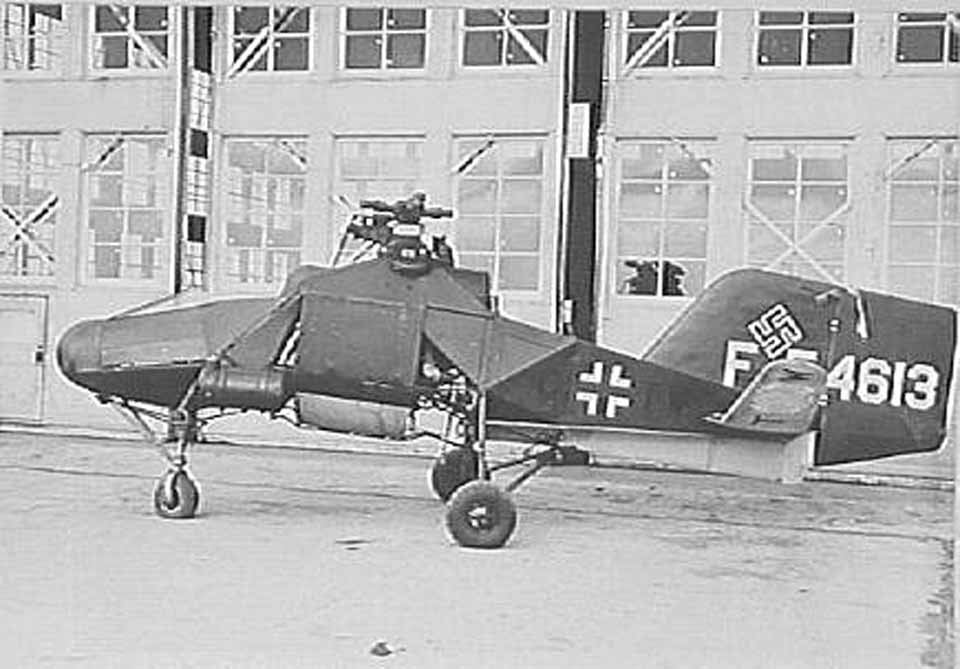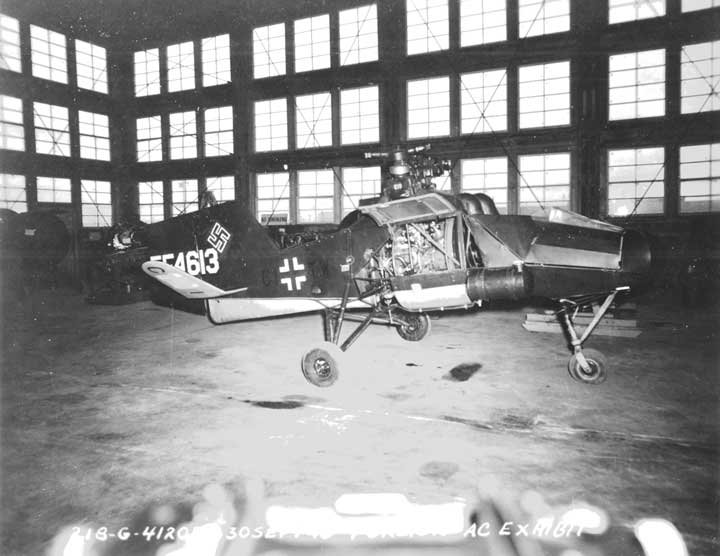|
FI282V-23 Helicopter FE-4613 Stock No. 3609-01-1119-FL282  Powered by FreeWebsiteTranslation |
|
|
|
|
 at Freeman Field |
|
 at Freeman Field 218-G-4120-P1 30 Sept 45 Foreign AC Exhibit Courtesy Mr. Lynn Ware |
|
 In the Freeman Hangar Ware Photo Collection |
|
 Flettner Fl.282 T2-4614 seen after arrival at Pewitt Aircraft of Benedict Airpot, Booth Corners, Pennsylvania. It was canibalised for spares to make T2-4613 airworthy. (USAAF) courtesy Graham M. Simons, "Operation Lusty - The Race for Hitler's Secret Technology" 2016 |
|
| Source | Disposition |
|
War Prizes pg 227 |
One of the two Fl 282 was from Transport Staffel 40, surrendered at Ainring, the second was surrendered by Anton Flettner at Bad Tolz |
|
War Prizes pg 227 |
This aircraft and FE-4614 were transported to the USA aboard HMS Reaper |
|
TSEAL 6D 09/01/1945 |
08/01/1945 at Newark to be crated and shipped to Freeman Field |
|
09/1945 Ware Photos |
In Freeman Field hangar. |
|
War Prizes pg 227 |
flown by Prewitt Aircraft at Benedict Airport, Booth Corners, under the contract referred to under FE-4614; |
|
War Prizes pg 227 |
flights were made by Prewitt Aircraft pilot, Dave Driskill |
|
Code 'CI+TW'. One of the two Fl 282 was from Transport Staffel 40, surrendered at Ainring, the second was surrendered by Anton Flettner at Bad Tolz. Both this aircraft and FE-4614 were transported to the USA aboard HMS Reaper. This example was a two-seat version of the Fl 282 (FE-4614 was a single-Beater variant). This helicopter was flown by Prewitt Aircraft at Benedict Airport, Booth Corners, under the contract referred to under FE-4614; 4613 was flown for 95 hours - work done under contract Nos W33-038-ac15926) and -ac15926. Flight tests were conducted at Benedict Airport, Booth Corners, Pennsylvania, with the helicopter tethered and in free flight. The objectives of the tests were to determine power requirements, control response, stability measurements and a comparison between a straight and a 'butterfly' stabilizer. The test flights totaled approximately 20 flying hours. The flights were made by Prewitt Aircraft pilot, Dave Driskill, who had previously worked with Richard H. Prewitt when the latter had been Chief Engineer of the Kellett Autogiro Company. Reports of the test findings were published in November 1947. "War Prizes" by Phil Butler, pg 227 |
|
|
|
|

